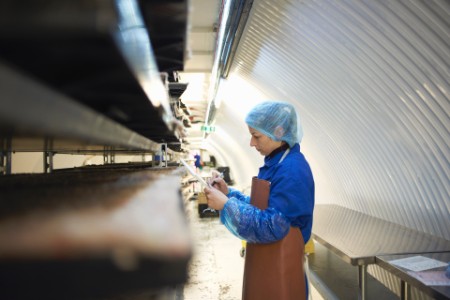
Chapter 1
Designing sustainable proteins that cater to global demand
Animals are an inefficient means of producing protein. Beef production emits 20 times more greenhouse gas per unit of edible protein than plant-based sources. If cows were a country, they would be the third-largest greenhouse-gas-emitting nation.
Animals are also alive. The industrial systems and supply chains required to deliver animal products raise issues of food safety, antibiotic resistant microorganisms and worker health. Many people have concerns about animal welfare in the food production process.
Yet people want meat. As the global population grows by 2.5 billion people through 2050 and income growth swells the global middle class, the UN’s Food and Agriculture Organization expects meat production to double. The global livestock herd could reach 40 billion animals by this date, with enormous sustainability impacts.
Food innovators are disrupting this narrative with approaches that cater to the consumer’s preference for meat rather than trying to change it.
Explore the gallery below on innovation within the meat substitution industry

Credit: Beyond Meat

Beyond Meat is a plant-based protein company, which has recently received investment from Tyson Foods. Pictured is a sample of Beyond Meat’s uncooked non-meat mince.
Credit: Beyond Meat

Beyond Meat uses non-GMO plant-based ingredients to emulate all sensory elements of beef, including the meaty red hue. The Beyond Meat color lab extracts juice from raw beets and transforms it into a concentrated powder colorant.
Credit: Beyond Meat

There are more than 1,000 molecules that make up the smell and taste of meat. In Beyond Meat’s analytical lab, scientists work to identify the signature aroma molecules of meat, and then source those same molecules from plant-based ingredients.
Credit: Beyond Meat

Recently purchased by Unilever, The Vegetarian Butcher founded by ninth-generation farmer Jaap Korteweg (pictured) an innovative plant-based meat producer from the Netherlands.
Credit: The Vegetarian Butcher

For the past seven years The Vegetarian Butcher’s research team have been working on a 100% plant-based hotdog.
Credit: The Vegetarian Butcher

The Vegetarian Butcher’s 100% Vegan NOCHICKEN chunks are one of the company’s flagship products.
Credit: The Vegetarian Butcher

A recent recipient of investment from Tyson Foods and Cargill is Memphis Meats. Pictured co-founders Dr. Uma Valeti and Nicholas Genovese watch on as Chef Derek Sarno prepares their cell-based chicken.
Credit: Memphis Meats
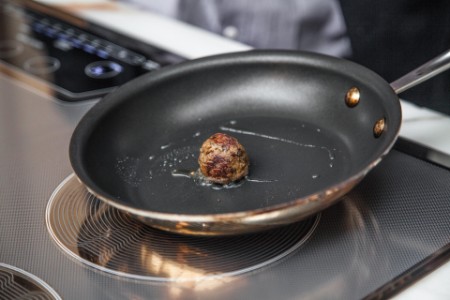
A Memphis Meats non-animal meatball cooking demonstration.
Credit: Memphis Meats
Plant-based meat and dairy
One approach to replacing animal grow proteins focuses on creating plant-based meat and dairy substitutes that have the taste and experience of the real thing—but without the caloric inefficiencies and sustainability impacts. Pea proteins, wheat and potatoes are being turned into hamburgers. Oats become yogurt. Mung beans become eggs.
The potential for plant-based food innovation is only beginning to be tapped. Of some 200,000 edible plants, just three—rice, maize and wheat—provide over half the world’s calories from plants. The tools available to work the alchemy of turning plants into meat have become incredibly powerful. Artificial intelligence (AI) allows researchers to rapidly assay plant proteins and flavors that could provide desirable food properties based on existing products.
Plants have a far more diverse genome than animals, offering a deep reservoir for genetic optimization. Fast and cheap genomic technologies have democratized gene editing, opening the door to customizing plants for various food-related objectives, such as improving taste, reducing processing, removing allergens, enhancing nutritive content and optimizing protein structure. Crispr gene-editing technology—which modifies an organism’s own genome rather than introducing a gene from another species—has already been used to produce a healthier soybean oil. More commercial releases are in the queue.
Cell-based meat
Where plant-based meat seeks to replace animal proteins, cell-based meat (also referred to as clean meat) aims to produce real meat—except without raising animals. It is an approach that draws on regenerative biotechnology to culture meat, dairy proteins and animal products such as leather. This cellular agriculture grows animal cells in a medium of amino acids, sugars, minerals and water, much more efficiently than an animal can, achieving one calorie of output for just three calories of input. Growing animal products in the controlled lab environment avoids the pollution, greenhouse gases, water consumption and sanitary problems of conventional production. Meat can also be grown much closer to demand, cutting short an extended global supply chain.
Growing market uptake
Rather than pursuing niche vegan markets, the companies developing meat substitutes and cell-based meat aim squarely for the mainstream market where their products must compete on taste, cost and convenience. Success depends on achieving scale to lower costs and continuing innovation in the product experience.
Large meat suppliers appear ready to help these innovations scale. Unilever recently acquired The Vegetarian Butcher, an innovative plant-based meat producer in the Netherlands. JBS, the world’s largest meat producer, is launching a plant-based burger. Tyson Foods is entering the alterative protein market with a new brand featuring plant-based and blended (plant/animal) protein products. Both Tyson Foods and Cargill have invested in the cell-based meat startup Memphis Meats.

We’re growing meat directly from chicken cells without having to use animals, drastically lowering the resources required to produce meat.
These products become part of an overall protein portfolio that can scale with demand. They also come without the sustainability and health tensions that characterize conventional meat supply chains. While the large food companies are invested in processing and distributing meat, they don’t own herds or farms and can adjust nimbly to the consumer’s shifting preferences.
China, one of the main drivers of global meat demand, also recently gave a boost to the scaling cell-based meat industry. It signed a US$300 million trade agreement with Israel for cell-based meat from the Israeli start-ups SuperMeat, Future Meat Technologies and Meat the Future. Cell-based meat addresses the Chinese imperatives of lowering greenhouse gas emissions, improving food safety and increasing food security.
Key questions to consider
- What is the opportunity to create new product categories using food-by-design capabilities?
- Where do plant-based or cell-based meat products fit into your product portfolio?
- How will plant-based and cell-based meat help to solve existing food industry problems?
- What are the land use implications—and opportunities—of shifting protein production to more space-efficient methods and away from traditional areas?
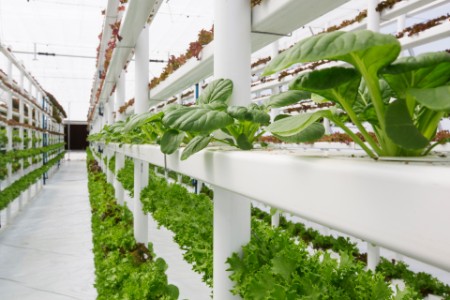
Chapter 2
Smart vertical farming: produce by design
Consumer preferences, urbanization and the decentralizing force of technology open the door to bringing farming to cities at significant scale. Digitally enabled vertical farms decouple production from climate, enabling food to be grown close to the source of demand.
While it is difficult to compete against the cost structure of traditional farming, vertical agriculture offers countering advantages:
- More yield per square meter, with reduced waste and significant carbon and water savings
- Production close to demand, cutting out transportation and middlemen expenses
- Consistent supply at predictable prices for local retailers, regardless of global weather
- Plants custom-grown to meet local tastes
- Consumers willing to pay a premium for super-fresh, traceable and sustainable food
- Ability to tie production to individual consumer demand through digital applications and supermarket data
Vertical farms are being integrated into different urban environments around the world. Japan’s Spread Co. recently began shipping from the world’s largest vertical farm, based in Keihanna Science City, a highly-automated facility which can produce 30,000 heads of lettuce per day. Fresh Direct Nigeria is a start-up bringing stackable container farms to the cities of Abuja and Lagos, helping to address food supply gaps and create a new generation of city farmers.
Related article
Explore the gallery below on innovators in vertical agriculture
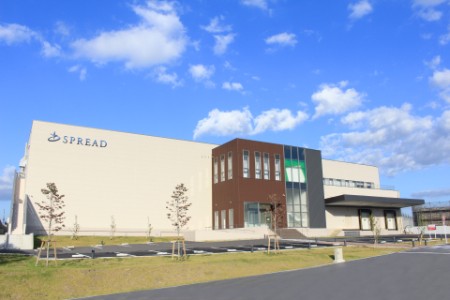
Credit: Spread Co.

Pictured is the world’s largest automated vertical farm, owned by Spread Co. based in Keihanna Science City, Japan.
Credit: Spread Co.

Spread Co’s automated vertical farm facility can produce 30,000 heads of lettuce per day.
Credit: Spread Co.
Key questions to consider
- What new business models can be built around bringing farming close to consumers?
- Is digital urban agriculture now a key ingredient for making cities smart and resilient?
- How can vertical urban agriculture improve the economic and social dynamics of cities?
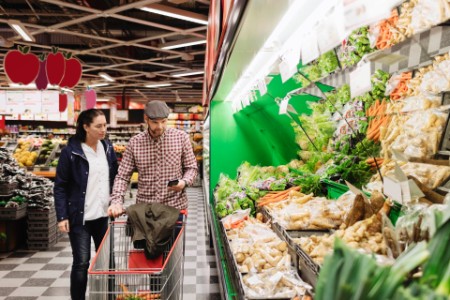
Chapter 3
Human biome: Diet by design
Biotech and food converge again as understanding of the human gut biome grows. We used to know only what foods were generically good, through analysis of the biome it is now possible to determine which foods are optimal for the individual.
DayTwo, an Israeli company, has commercialized a diagnostic that analyzes the DNA of your gut biome and uses an algorithm based on extensive clinical research to predict your glycemic (blood sugar) response to different foods, which varies significantly among individuals. Glycemic spikes are associated with disorders such as obesity and diabetes. DayTwo currently offers individual wellness diet recommendations but is collaborating with pharma partners to develop nutrition-based health solutions and biome-based treatments for metabolic disorders.
This development flips our perspective from viewing food as a source of illness to food as a source of wellness, with new opportunities to reduce health costs, improve outcomes and maintain wellness.
Key questions:
- How will food producers, retailers, insurers, pharma companies and healthcare systems work together for the best wellness outcomes based on personalized diets?
- What new digital partnerships will be required for food producers and retailers to serve billions of personalized diets daily?
- If personalized diets become the key to wellness, what industry is the food business in?
Summary
Food-by-design will reshape what and how we eat, affecting global supply chains, economies and human health. Our eating will be personalized, local and increasingly sustainable for human health and the planet. Now is the time for companies to assess the role they can play in this transformation and the potential upsides.
Key questions for CEOs and boards:
- How well-prepared is your company to respond to changing market dynamics in agriculture and food?
- What are the growth opportunities in addressing global food challenges?
- What is the opportunity for your technology to participate in food-by-design solutions?
- As food supply chains become shorter and resource efficient, what are the implications for energy, logistics and retail companies?
- Is your company ready for a world of radical transparency?



